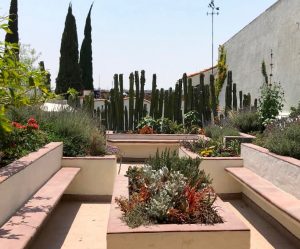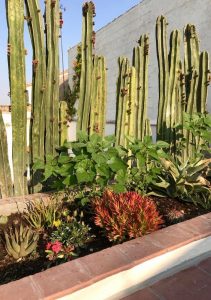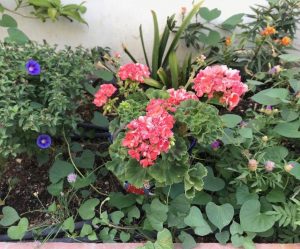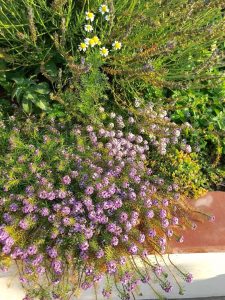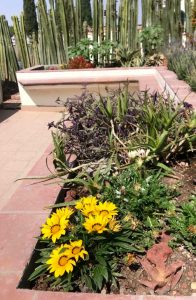When it came time for me to leave Ségou, Mali, in early 2001, I invited my landlord, a grand type (“big shot”), as the Africans would say, businessman from the capital, Bamako, whom I’d never met in person, to come and inspect his house, which I’d been renting for nearly three years.
At the time I’d moved into this house, a three-bedroom, one-story, cement-block structure in a middle-class Malian neighborhood, it was nine years old and had never been lived in. Its surrounding grounds were as flat, dusty and lifeless as a desert. To me, though, this baked earth looked like a blank canvas, and I made its transformation one of my creative projects there.
Mali is a hot, dry, land-locked country in West Africa, bordering the Sahara, with daytime temperatures frequently at or near 120 F. (48.8 C.) — the polar opposite of “lush.” But I was determined to make a garden with my own two hands, which I’ve always enjoyed getting dirty, and then-strong back, made even stronger by pulling up countless buckets from my well to water all the plants every day. Although I was just a beginner, a true amateur, the resulting lush garden became my delight.
On that day in February 2001 I gave my landlord a slow tour of my courtyard, so he could take in the transformation. On the right side of the house I’d planted a row of papaya seeds that I’d saved and dried, and the healthy papaya trees that grew from those seeds were already much taller than I and bearing plump, sweet fruit. In one corner of the the front yard I’d made a tiered rock garden filled with various cacti and succulent plants, as well as Mexican-hat flowers, the seeds for which I’d received in the mail from a friend in New Mexico.
Along the courtyard’s white stone front wall I’d planted red, purple, and golden bougainvilleas that were climbing up one side and cascading down the other. On the left side of the courtyard was my vegetable garden, where fat Roma tomatoes and Genovese basil especially thrived. And close to the house, like a short, multicolored, frilly skirt, were flowering plants, always in bloom.
My Malian landlord seemed at a loss for words. He shook his head as if to wake from a dream. Then he stopped, looked straight at me, and pronounced, “C’est paradis!!!”
Mali is a Francophone, predominately Muslim country, where most people are well versed in the Koran’s teachings. There are, according to one source I read, 78 references to gardens in the Koran, such as this one (from the Penguin Classics translation by N. J. Dawood):
“Allah has promised the men and women who believe in Him gardens watered by running streams, in which they shall abide for ever. He has promised them goodly mansions in the gardens of Eden. And what is more, they shall have grace in His sight. That is the supreme triumph” (9:72).
When people live their entire earthly lives in hot, dry, desert-like environments, the promise of eternal life in a lush garden watered by running streams is clearly appealing. And having a beautiful garden in this life becomes heaven on earth.
Now that it’s springtime in the Northern hemisphere and the soil is waking from its winter sleep and hungry to be fed and planted, more of us can enjoy some of this heaven on earth by creating and nurturing a garden.
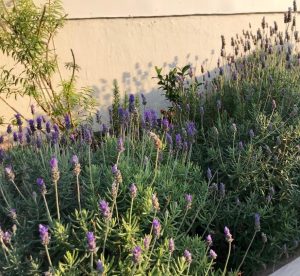
This week I’ve been researching the many health benefits of gardening, about which a whole lot has been written, I found. Scientific studies have shown that being around plants, especially while gardening, reduces stress and anxiety. As one article I read put it, “Gardening adds years to your life and life to your years”:
“Gardens are special peaceful spaces with restorative qualities that can work wonders when we are stressed and under pressure. Stress is a worldwide 21st century problem that can cause physical problems such as higher blood pressure, muscle tension and digestive problems, while long-term stress can lead to serious health issues including depression and anxiety.” (To read the whole article, “Why Gardening is Good for Your Mental Wellbeing,” go to:
Charlie Hall, Ph.D., AgriLife Extension horticulture and economics specialist, has done research to uncover all the ways gardening and plants can help better your mental health:
“‘Interacting with nature, especially with the presence of water, can increase self-esteem and mood, reduce anger, and improve general psychological well-being with positive effects on emotions or behavior,’ Hall said. ‘In fact, moving to homes with greener areas positively influences mental health even after three years.’ However, doing your own gardening can have the same effects on your mental health” (https://agrilifetoday.tamu.edu/2020/05/18/gardening-can-influence-and-benefit-your-mental-health/).
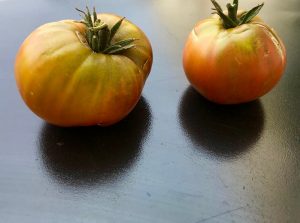
Those of us who live in year-round-warm-and-sunny climates, such as here in San Miguel de Allende, Mexico, are immensely fortunate to be able to enjoy our gardens and gardening all year long. Such gardens can be an essential item on our “quality of life” list [see last week’s WOW post] — at least this is true for me, and especially now.
Here are some photos I took this week of the terrace garden I tend just outside of my studio apartment in SMA. This is my current “garden of delight”:
~ ~ ~ ~ ~ ~ ~ ~
For more on the health benefits of gardening, visit:
https://www.psychologytoday.com/us/blog/think-act-be/201906/10-mental-health-benefits-gardening
https://www.garciaweightloss.com/blog/10-benefits-gardening/
https://www.thisiscalmer.com/blog/10-benefits-of-gardening-for-your-mental-wellbeing
For more on my three-year experience living and working in Ségou, Mali, read my memoir, How to Make an African Quilt: The Story of the Patchwork Project of Ségou, Mali(Nighthawk Press, 2013): https://www.amazon.com/dp/0615773397/ref=cm_sw_r_cp_ep_dp_yMcnBbB69TAR8

